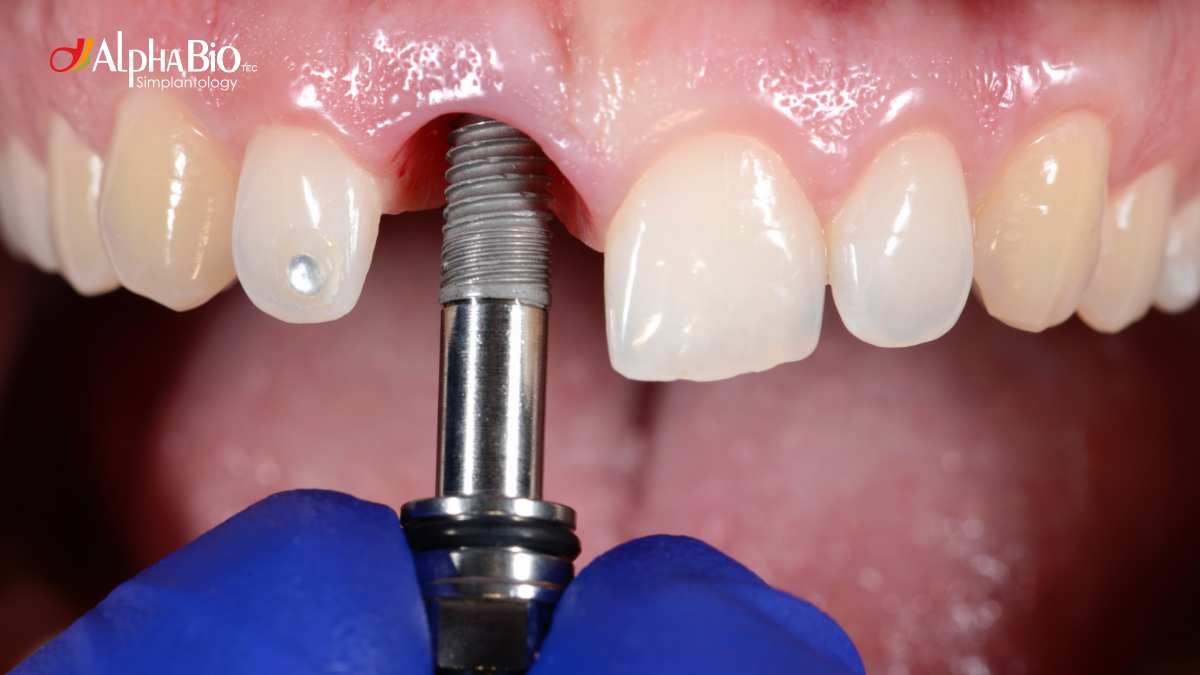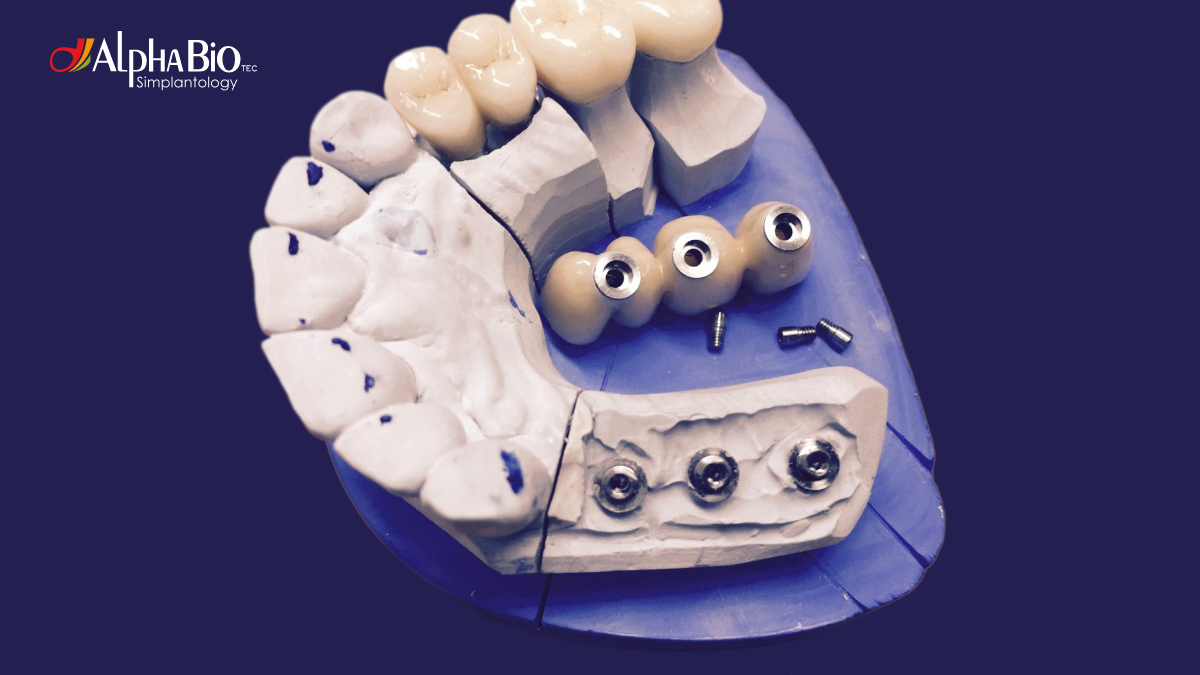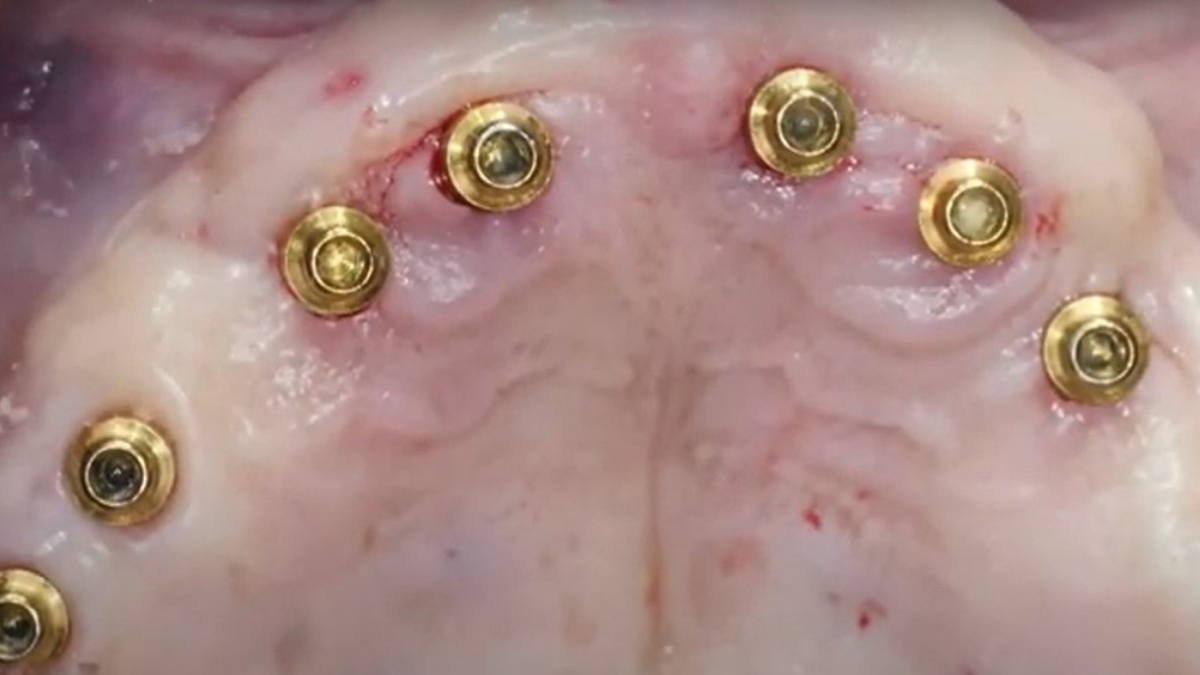Today, implant dentistry has taken center stage, to what has become a global industry standard in the replacement of missing teeth. Years of market research and patient follow-up reports have shown that implants yield a good survival and success rate. But there’s been a gradual shift in our industry, where the main focus of implant dentistry has migrated from osseointegration towards the optimal positioning of the implant itself.(1)
What prompted this move, and why is implant positioning so vitally important in the overall procedure?
The answer is two-fold. First and foremost, it’s aesthetics. Patients don’t only want to replace missing teeth. What they really want is to have the perfect smile. Whether you’re in your 20’s or your 80’s, your smile is your ‘calling card’ and it’s an integral part of your natural beauty. Second, correct implant positioning is considered a prerequisite in achieving aesthetic results.(2) What’s more, incorrect or inaccurate positioning increases the risk of complications down the road. Studies show that nearly half of the peri-implantitis cases can be traced back to implant malpositioning.
For your practice and your patients
Beyond aesthetics and optimizing implant positioning, implementing 3D planning and guided surgery in your practice can help reduce intra-operative and post-operative complications and offers a host of value-added benefits for you, and your patients. Essentially, guided implant surgery is a significantly faster procedure, often resulting in the patient leaving with a tooth restoration on the same visit. The procedure also allows you to have a fuller, more comprehensive picture of the patient’s mouth, to provide the best suited, and most accurate treatment.

But that’s not all. Guided implant surgery is a key contributing factor in:
- Reduced chair time – By reducing procedure time by 15-25%, you can increase your clinic’s productivity and efficiency, with significant savings on time, resources, and costs. You will also welcome ‘happier’ patients, who inherently, prefer to sit in a dental chair for as little time as possible.
- Faster turnaround time – Lengthy procedure turnaround time means extending the time required for final restoration, often causing a lag in payments, your time, and no less important, your patient’s time. Once your patients have decided to invest in the procedure, they’re anxious to get it done, and fast, to achieve that long-awaited perfect smile.
- Less pain – Do not confuse this with “painless,” however, the procedure is by far, less invasive, and therefore, the patient will usually experience less post-operative discomfort.
- Social distancing friendly treatment– In the wake of the “new normal,” and the challenges of adhering to less contact and social exposure, we all want to spend less time, face-to-face, and that includes the dental chair. It’s here that guided implant surgery checks all the boxes, by reducing the number of visits, shortening procedure time, and providing minimal invasive procedures, ultimately reducing patient/dentist contact and exposure time.
Bridging the Digital Divide
As in nearly all global industry sectors, dentistry has reaped the many benefits of digitized and automated procedures, enabling a greater number of patients to receive better care for their time spent in the dental chair. As a result, digital dentistry has evolved, and continues to forge ahead, to help keep patients more informed about their diagnosis, treatment options, and overall dental hygiene, and health.
Guided implant surgery is often cited as the ‘cornerstone’ of digital dentistry, as it takes the implant procedure to an entirely new level of efficiency and accuracy. In a word, guided implant surgery is when a dentist utilizes highly advanced machinery and imaging technology to “guide” or assist them to produce and position dental implants more efficiently, precisely, and accurately.

Today, digital transformation in dentistry is more than just evolution, it’s a revolution. More has happened in dental technologies in the last 5 years than in the last 300 years, with the advent of virtual reality, enhanced vision microscopes, and a veritable mix of innovative digital procedures.
The Big 7: Key benefits of guided implant surgery
When onboarding any new digital technology, you can expect a lengthy learning curve, trial and error process, and countless iterations, until you and your team gain the skills and the confidence to implement a new treatment modality in your practice. To assist you on your journey towards successful guided implant surgery, we have compiled a Guided Implant Surgery eBook that can also be download, and printed.
Following are just some of the eBook’s highlights – The seven key benefits of guided implant surgery:
- Increased patient acceptance of the procedure – Educated patients are more likely to agree on a surgical procedure if they understand what the outcome will be. The digital eBook enables you to discuss and demo the procedure to your patient, explaining how it’s essentially much safer than alternative procedures, as well being able to visualize the final prosthetic result.
- Greater clinical options – In the past, you may have changed your original treatment plan when the CT showed you had limited space to place the implant. An alternative plan might require new extractions or other less preferred treatment, such as a removable denture or grinding teeth for a bridge, instead of placing a single implant. With guided implant surgery’s high accuracy, you can position the implant in areas with limited space , without the fear of damaging adjacent teeth or anatomic structures. This will allow for sufficient surrounding bone, and you won’t have to worry about accidently placing it too close to the adjacent tooth where space is limited. Guided implant surgery is also an ideal solution for patients missing lateral incisors, making the procedure significantly easier.
- High accuracy in implant placement – By combining the CBCT together with the intra-oral scan of the patient, you can digitally plan the ideal implant position and visualize the surrounding structures in order to ensure an accurate implant placement. This way, you are able to position the implant in the optimal area, minimizing the risk of damaging blood vessels, nerves, adjacent teeth, or other anatomic structures.
- Reduced time – In some cases, the time required for implant surgery can be significantly reduced, as the planning is done when the patient is not in your office. Not only does this result in less chair time, it also allows you to plan the procedure when there is less pressure. Decisions are made prior to surgery, whereby digital planning allows you to do the planning, and make both surgical and prosthetic decisions with your dental team and your lab technician when they’re all available. Your entire team can visualize and approve the treatment plan, and the final restoration, and in turn, be fully prepared on the day of the surgery.
- Immediate aesthetics and function– Thanks to the 3D planning and very accurate implant position, your dental technician is able to prepare the prosthesis in advance. With guided implant surgery, you can be confident that your patients will leave the clinic with an accurate prosthesis in a relatively short period of time.
- Less morbidity and faster healing – Guided implant surgery is often flapless (or involves a minimal invasive flap procedure). This reduces the postoperative discomfort and allows for faster healing.
- Boosts your clinic’s productivity – The ability to plan the implant position accurately, consult with your team or a mentor prior to the surgery, while knowing the outcome in advance, will allow you to perform procedures with higher predictably and enhance the efficiency of your practice.
Smart choices take time
Guided implant surgery is not a simple plug and play. You will need to invest a substantial amount of time in choosing the software solution that works best for you and your team. Once you’ve selected the software, you will need then to learn how to use it. To shorten the learning curve, you may decide to use an outsourced professional (mentor) or a guided surgery services provider. Essentially, they will help planning the case for you, whereby, all you need to do is review and approve. This can significantly reduce the time and resources you need to invest in purchasing the software and/or learning how to plan the case.

It’s important to note that even if a third-party plans surgical procedure for you, that you have completed an implant surgery course, and have already successfully placed implants. You need to fully comprehend the basics of implant surgery to ensure a high level of understanding as to what the procedure entails. This way, you will have the necessary skillset to identify those cases that are not suitable for guided surgery. For example, in posterior implant cases when there is limited access, especially with longer drills, guided surgery may not be the first choice of treatment. Similarly, edentulous cases with a highly resorbed ridge, and cases that involve extensive bone grafting, may also not be good candidates for guided surgery.
What we do know for certain, is that guided implant surgery can be a valuable treatment option for both the dentist, and the patient. With guided surgery, you are able to digitally plan, visualize the final result, and accurately perform the procedure in less time, with less pain, and with predictable outcomes for the short and long term. The increased level of patient acceptance and satisfaction is a key benefit for you and your practice.
As implant dentistry continues to become more prosthetic-driven, we can expect to see more dentists placing implants with digital planning, and guided surgery procedures.
To download the Guided Implant Surgery eBook, click here
References:
- Guidance means accuracy: A randomized clinical trial on freehand versus guided dental implantation.
- Computer technology applications in surgical implant dentistry: a systematic review. Ali Tahmaseb, Daniel Wismeijer, Wim Coucke, Wiebe Derksen.
- Clinical and microbiological findings in patients with peri-implantitis: a cross-sectional study. Luigi Canullo, David Peñarrocha, Oltra Ugo Covani, Daniele Botticelli, Giovanni Serino, Miguel Penarrocha.
Related Blogs
Immediacy | Tips & Techniques

What type of dental implant is best for immediate implant placement
Education | Tips & Techniques

What do you need to know before you start - Implant Placement
Immediacy | Tips & Techniques

7 Advantages of Immediate Tooth Implantation
Education | Overdentures | Tips & Techniques

Getting Started with Implant Prosthetics: What you need to know
Guided Surgery | Digital Dentistry | Immediacy

Guided Surgery in Post-Extractive Maxilla with AlphaLoc Abutments: Immediate Loading Using Immediate Load Dental Implant
Guided Surgery | Digital Dentistry | Immediacy

